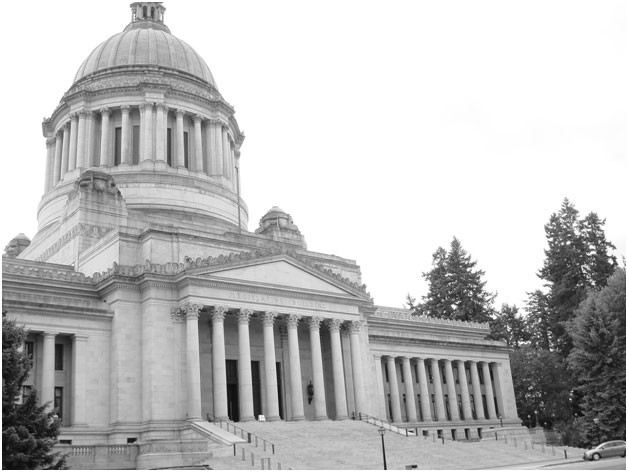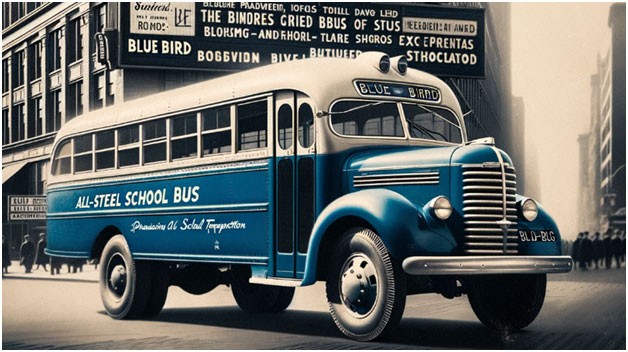
Image via DALL-E3
Introduction
The iconic yellow school bus has been a textbook symbol of education for generations, providing a safe and reliable means of transportation for millions of students worldwide.
While the school bus may seem like a simple mode of transportation, its history is a rich story filled with significant innovations that have shaped the way we transport students to and from school.
Let's embark on a journey through time to trace the fascinating history of the school bus, from its humble beginnings to the modern marvels we see today. We’ll also take a quick glance at the horizon to identify the innovations that are on their way to a bus stop near you.
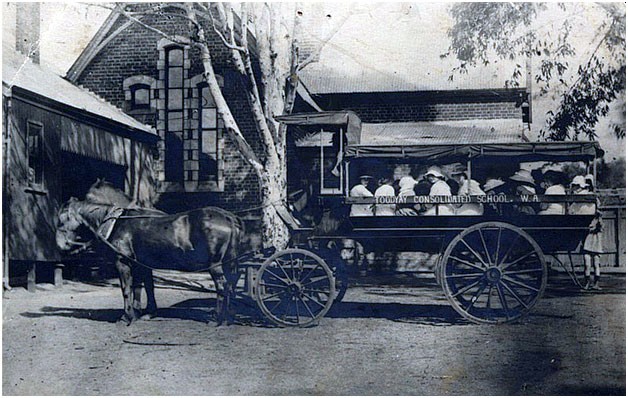
Shire of Toodyay Newcastle Gaol Museum collection, Public domain, via Wikimedia Commons
From Horse-Drawn Carriages to Motorized Buses
As the West was settled in America, the 19th century saw families begin to settle into a rural lifestyle.
Unfortunately, the network of basic roads left a lot to be desired. School-age children had to walk for miles and the seasonal farm life and lack of reliable transportation meant that many children couldn’t attend school full-time.
By 1852, Massachusetts became the first state to pass a required education law. And by 1900, most other states had followed suit.
Horse-drawn carriages were the primary mode of transportation for students in the United States. These carriages, often called "kid hacks" or "school hacks," were privately owned and operated by individuals who were contracted to transport children to school.
These hodgepodge vehicles were basic wooden structures, lacking any standardization in terms of design or safety features. The converted farm vehicles had benches installed along the sides and a rear entry gate so that the children didn’t spook the horses as they climbed aboard. They lacked even a top to provide protection from the elements.
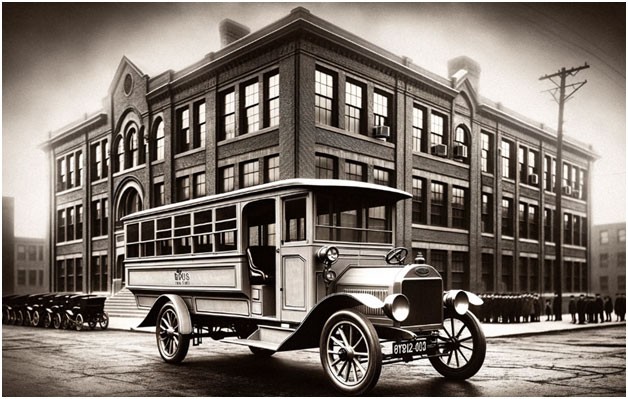
Image via DALL-E3
The First Motorized School Bus
The dawn of the 20th century brought about significant changes in transportation technology, and the school bus was no exception. The introduction of motorized vehicles replaced horse-drawn carriages, making transportation more efficient and reliable.
In 1914, Wayne Works of Richmond, Indiana, is credited with producing the first motorized school bus. This early version was a modest improvement over horse-drawn carriages but was a significant step towards modern school buses.
Being the first on the road, Wayne Works cemented a decades-long run as a top solution for school transportation.
Another factor that was a driving force behind the expanding need for safe and reliable school buses was the accelerating urbanization of the nation and the gradual consolidation of schools.
Single-room schools slowly combined into unified districts that needed to offer a greater number of services to families while congregating the students into centralized locations. This paved the way for more transportation contenders to enter the race.
Albert Luce Sr. was one such intrepid soul. He owned Ford dealerships in Georgia and created a rudimentary school bus by attaching a wooden body to a truck frame. Later he improved the design with an all-steel frame to increase stability. By 1940, Luce’s company, Blue Bird, was another top manufacturer being eyed by school systems.
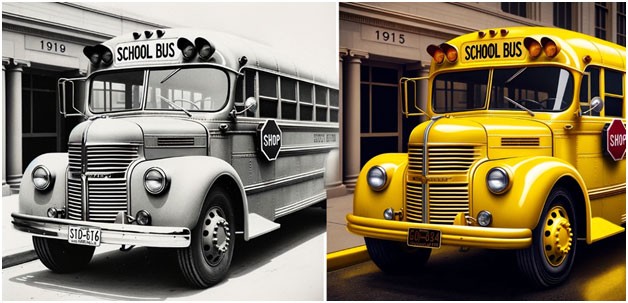
Image via DALL-E3
The Yellow Revolution - Standardization of Color
National standards regarding school buses were absent. However, this would eventually change as an incremental shift in priorities pushed the public to improve the safety of school transportation methods.
In the 1930s, a pivotal moment in the history of school buses occurred when Dr. Frank W. Cyr, a teacher who made his career in rural public schools in the Midwest, led a committee to standardize school bus design and safety features.
The committee's work led to the adoption of a standardized color for school buses: bright yellow. This uniform color made school buses more visible and instantly recognizable in the daybreak light, enhancing safety for students.
In 1958, the National School Bus Yellow Color Standard was established, specifying the exact shade of yellow used on school buses. The color selection came to be known as School Bus Glossy Yellow and is technically known as Color 13432.
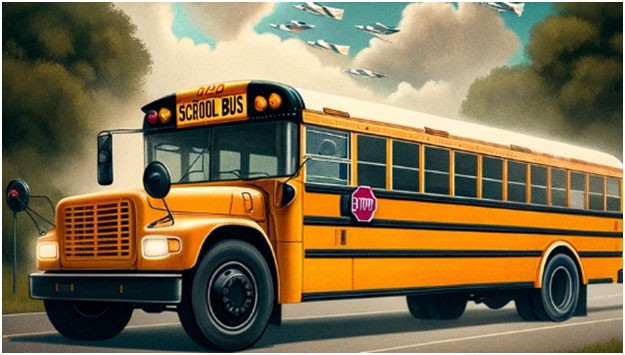
Image via DALL-E3
Technological Advancements From the 1930s to 1990s
Over the decades, safety innovations have been a top priority in the development of school buses. In 1939, the first stop-arm paddle was introduced to help protect students when boarding and exiting the bus.
The 1960s saw the introduction of padded seatbacks and the use of reinforced steel frames for added crash protection. States like New Jersey began to mandate eight identifying lights – red and amber – on the fronts and backs of buses. The 1970s brought improvements in emergency exits and better flame-retardant materials for the interior.
By the 1980s, most school buses had high-backed, padded seats with integrated seat belts, setting new standards for passenger safety. This time brought about a realization that safety extended beyond the vehicle itself. In 1986, mandatory commercial driver’s licenses were required for drivers of these oversized vehicles in New York and other states.
The Role of Legislation
One of the critical factors shaping the school bus's transformation has been legislation. Over the years, lawmakers have enacted a series of regulations and safety standards aimed at protecting students during their daily commutes. Here are some key legislative milestones:
Dr. Frank W. Cyr's Committee
As mentioned earlier, in the 1930s, Dr. Frank W. Cyr led a committee that standardized school bus design and recommended 44 features designed to improve safety. This initiative laid the foundation for consistent safety measures, including the adoption of the signature bright yellow color.
National Traffic and Motor Vehicle Safety Act (1966)
The signing of this federal law empowered the National Highway Traffic Safety Administration (NHTSA) to set and enforce motor vehicle safety standards. It significantly enhanced safety standards for school buses, addressing issues like structural integrity and emergency exits.
Standard 17 (1972)
The NHTSA issued a set of national guidelines that established mandatory regulations in school bus operation, inspection, maintenance, and driver/passenger training.
Education for All Handicapped Children Act (1975)
A guarantee of equal rights for every child was pushed by lawmakers in the mid-1970s. This Act established the roles and responsibilities of those who transport special-needs students.
National School Bus Safety Week (1988)
Legislators established the annual National School Bus Safety Week to promote school bus safety awareness. It underscores the importance of safe driving behaviors around school buses and highlights the importance of school transportation.
Stop-Arm Laws and Other Safety Standards
Over the decades, numerous states enacted strict stop-arm laws, imposing heavy penalties on drivers who fail to stop when a school bus's stop arm is extended. These laws help protect students while entering or exiting the bus.
In 1986, seat belts began to be required by states on newly purchased buses. This was due in part to fatal crashes in several states over the preceding years. The deaths were found to be preventable had the occupants been properly restrained.
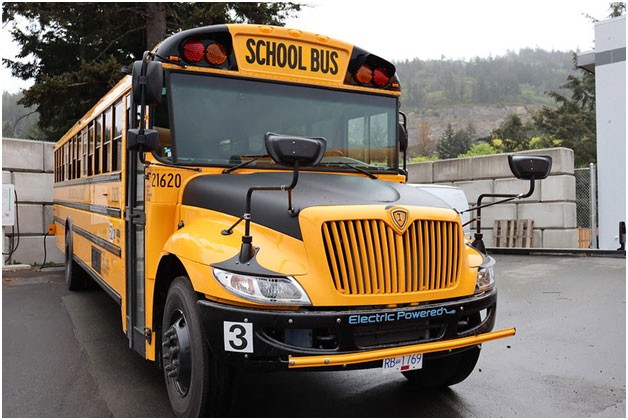
Image by Province of British Columbiavia flickr
Smart Buses and Sustainability
In the 21st century, school buses have embraced technology to enhance safety and efficiency further. GPS tracking systems have become commonplace in the automotive industry and these advances have propagated to the school transportation sector.
LED lighting, advanced suspension systems, and improved engine efficiency have made modern school buses more environmentally friendly and cost-effective.
One of the most notable innovations is the development of alternative fuels, such as propane and compressed natural gas, which reduce emissions and lower operating costs.
Additionally, hybrid and electric school buses have begun to emerge, offering a greener and quieter alternative to traditional diesel buses.
Technological advancements have played a pivotal role in the transformation of school buses. Here are some notable innovations:
GPS and Route Optimization
GPS tracking systems have become standard, allowing parents and administrators to monitor bus locations in real-time. Route optimization software helps improve efficiency and reduce fuel consumption.
IoT Connectivity
The Internet of Things (IoT) has ushered in an era of connectivity, enabling real-time monitoring of various bus parameters, from engine performance to tire pressure. This data allows for proactive maintenance and improved safety.
Sustainable Methods
School districts are increasingly adopting sustainable methods of transportation. Electric and hybrid school buses are gaining popularity, reducing emissions and operating costs. Additionally, propane and compressed natural gas are being used as alternative fuels.
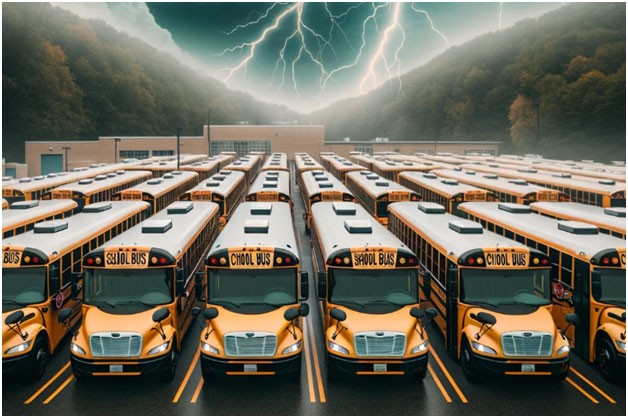
Image via DALL-E3
Real-World Example: A School District's Transition to Electric Buses
Look at the Montgomery County Public School system in Maryland. This district that borders Washington, DC to the north is pioneering the transition to a zero-emission fleet of school buses.
The organization has vowed to reduce its carbon emissions by 100% by the year 2035 and the move to a fully electric fleet over the next decade positions it to reach this lofty goal.
In its first year of transformation, the school district received 25 electric buses and installed the necessary infrastructure to accommodate the new design. This year, MCPS added an additional 61 buses. By the end of the transition, the district is expected to balloon its fleet to 326.
Environmental Impact of the Electric Transition
Montgomery County Public Schools uses nearly 17,000 gallons of diesel daily. All this fossil fuel consumption creates a profound effect on student and community health.
Addressing the Cost
This eco-movementdirectly affects the underlying school budget. At a price tag of almost $80,000 per day for fuel, it’s quite costly to run and maintain diesel-spewing buses.
It is estimated that an electric bus costs about $2600 for every 15,000 miles to operate. Meanwhile, a diesel variant costs about $9,000 over the same distance.
A study by Columbia University also found that the replacement of one diesel bus with an electric one could save $150,000 in human health care costs every year.
Reception
Student riders and bus drivers are enjoying the new upgraded buses. These modern and eco-friendly vehicles provide more space than outdated models, fitting extra passengers.
Drivers report that they must no longer yell over the noisy engine to make themselves heard. The noise reduction has led to better behavior and a calmer atmosphere.
Challenges
One of the greatest challenges for MCPS is the scope of work. With 1,230 buses on the road, its mandate to replace over 300 buses with electric models will make a significant impact. However, it still has work to do to reach a zero-emission goal.
Time will tell if Montgomery County’s substantial efforts create a wave of change across other school organizations around the country.
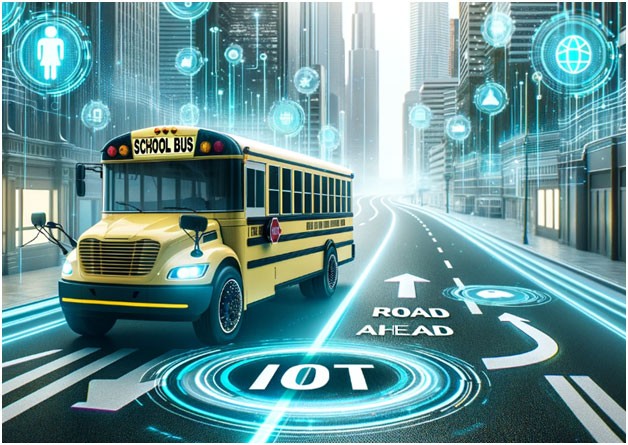
Image via DALL-E3
What's Next?
As we look ahead, the future of school transportation holds exciting possibilities. Here are some advancements to watch for:
Autonomous School Buses
Autonomous driving technology continues to advance. In the coming years, we may witness the deployment of autonomous school buses, further enhancing safety and reducing the risk of accidents caused by human error.
IoT Integration
The integration of IoT technology will become more sophisticated, enabling not only real-time monitoring but also predictive maintenance. This will ensure that buses remain in top condition and are less likely to break down.
Sustainable Innovations
The push for sustainability will intensify. We can anticipate more electric and hydrogen-powered school buses, along with improved battery technology to extend their range. Solar-powered buses may also become a reality, reducing the environmental footprint of school transportation.
Conclusion
The history of the school bus is a testament to the power of legislation, technology, and human ingenuity. It has evolved from horse-drawn carriages to high-tech, environmentally friendly vehicles.
Legislation has played a vital role in ensuring safety, while technological advancements continue to enhance efficiency and connectivity.
Looking forward, we can anticipate even more exciting developments, including autonomous driving, IoT integration, and sustainable innovations, all aimed at creating a safer, more eco-friendly future for school transportation.
The school bus, a symbol of education and progress, will undoubtedly continue to adapt and improve in the years to come.
References
https://www.smithsonianmag.com/innovation/history-school-bus-180980554
https://electrek.co/2022/12/30/how-the-largest-electric-school-bus-transition-in-the-us-is-going
https://huntingtoncoach.com/2023/01/evolutionary-timeline-of-the-american-school-bus
https://www.schoolbusfleet.com/10010920/decade-by-decade-50-years-of-pupil-transportation-history


